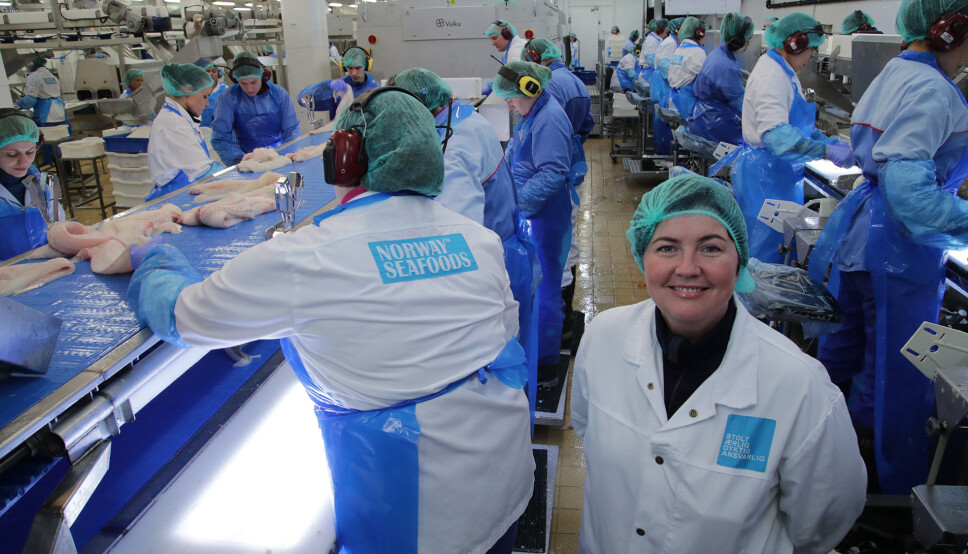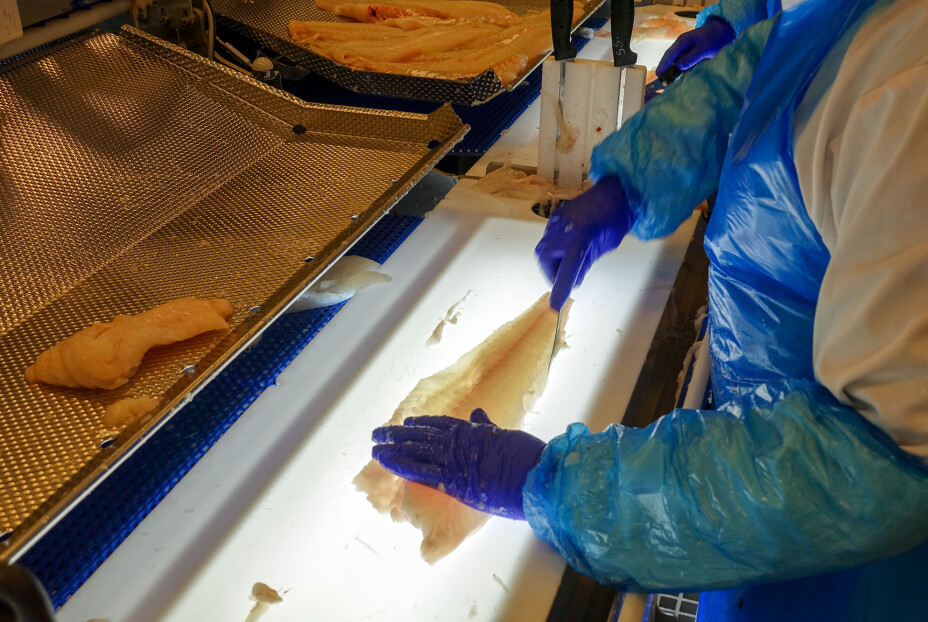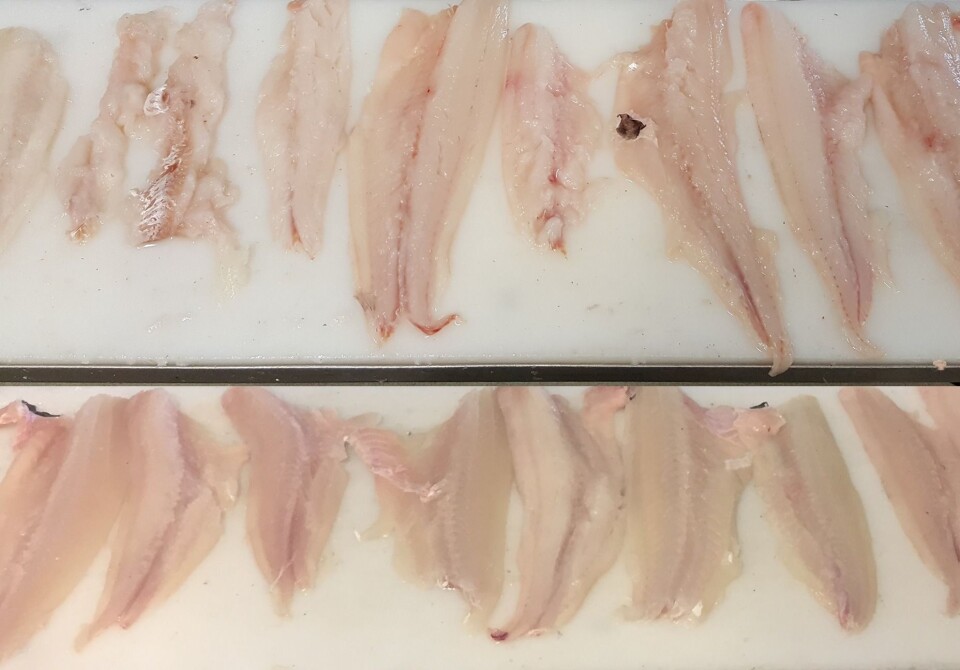
Fish is fish - isn’t it?
My time as a fish filleter during my youth would have been a delight if I’d worked on the haddock that now arrives on the filleting table.
When I was young, I was lucky enough to work in a fish filleting factory at Myre in Vesterålen. I started on the ‘housewife shift’ and worked every Thursday and Friday from four o’clock in the afternoon to eight o’clock in the evening. Later on, I managed to get a summer job there as well. Snefrid taught me the noble art of filleting fish, where as much fish as possible was to be left on the fillet, and as little as possible was to be trimmed off.

I spent many enjoyable workdays there, and I experienced the huge difference between fish of good quality and fish of poor quality. Young as I was, and not particularly quick at filleting either, I was paid by the hour. And that was lucky for me, especially when poor-quality haddock came in. Sometimes, it was almost impossible to distinguish the top half of the fillet from the bottom half, or what was front and what was back.
“Gory haddock” – it’s not without reason that this phrase gets used in regard to haddock. Gory haddock is haddock that has soggy flesh and tends to fall apart, and in some cases, the flesh turns a reddish colour. Nevertheless, haddock is a popular species of fish. It is an important ingredient in fish cakes and fish balls.
Inexperienced fish filleters soon experienced better times when catches of large, fine cod were hauled in, or preferably coley that had been kept alive in seine nets in the fjord during the summer season. They were big fish with firm flesh, and things went quickly – for me too.
Even back then, I wondered why there could be such a difference in quality? Fish is fish - isn’t it?
Fish filleters are expensive to employ
Currently, the Norwegian fillet industry is struggling with regard to profitability, and several filleting factories have invested large amounts of money in robots that have partly taken over the work tasks.
In addition to the cost of purchasing fish, staff costs are the largest item of expenditure. This means it is very important that the factories purchase fish of such good quality that the whole fish can be used.

How to get top quality?
In my job as a scientist at Nofima, my colleagues and I investigate how to get the best quality fish.
What determines whether a fish is of good quality? Seasonal variations, catch injuries, handling on board until delivery, and how the fish are handled at the onshore facilities – all of these factors are important.
But the first step is the most important – the catch. You can’t repair a raw material that is already damaged.
Poor quality tends to spread
Each year, my colleagues at Nofima record catch injuries sustained by fish. The statistics show that the fishing gear used to catch the fish is of great importance regarding quality. Especially seine fishing and other types of nets can result in poor quality and damage the fish if the gear is not used correctly.

Poor quality and profitability tend to spread further along the value chain; fishermen receive approximately three to four kroner less per kilogram for haddock caught in seine nets compared to line-caught haddock. In addition, the fishing industry reports that it costs them an extra three kroner per kilogram to fillet ‘gory haddock’ compared to prime quality haddock.
Fish that die before they are bled tend to develop flesh that is off-white and not particularly delicate. If the fish have also been exposed to crush or impact injuries, they may develop soft flesh and deposits of blood in their fillets. All this makes it difficult to produce good quality fish products.
Haddock research
For many years, Nofima has worked to improve the quality of haddock, in close collaboration with both fishermen and the fishing industry. We have conducted trials using fishing methods that are more gentle and that also involve species selection. This is a method that automatically releases other species so that catches consist almost exclusively of haddock. In addition, the haddock were caught more gently by using a codend releaser - an extra part attached to the seine net that provides the fish with considerably more space and reduces crush injuries. The trials were conducted together with skilled fishermen on board the fishing vessel called Ballstadøy, and with the fish processing company Båtsfjordbruket.
We experienced some frustrating days in Båtsfjord – would the weather hold? And would our boat locate the numbers of haddock we were looking for?
Have a guess if we achieved exciting results!

Fantastic quality
By catching the haddock using gentler methods, keeping them alive and allowing them to swim in a tank on board the boat until slaughter, we achieved a quality that was absolutely fantastic. The haddock’s flesh is white and firm, and a lot less flesh is wasted when the fish is processed or filleted. Both the fishermen and the processing facility were very enthusiastic and happy with the results we achieved together. The fish were described as having ‘an extraordinary quality’.
As a result of this, there are now more fish processing facilities that are only receiving deliveries of live haddock. This is because they can now make money on what used to be a problematic fish.
If I had now been back in the filleting hall at home in Vesterålen, I would have been delighted to have such a great raw material to work with. The ripple effect of being able to harvest the ocean in a way that utilises most of the raw materials will spread throughout the entire value chain; from the fishermen, via the filleting factories, and all the way to fish markets and shops. And finally, we as consumers benefit the most – white and delicate haddock.
This is sustainability and ethics in perfect union.







